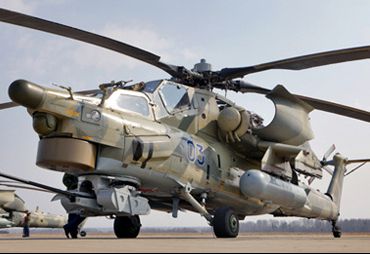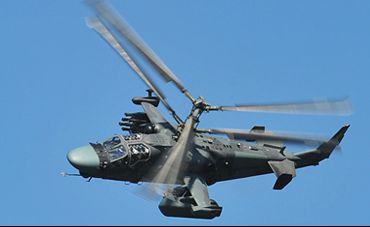This is what is learned from the Ria Novosti agency which cited sources from the Russian Ministry of Defense.
The flights involve dozens of Mi-28N Night Hunter and Ka-52 Alligator attack helicopters and Mi-8MTV -5 and Mi-26T transport.
The Fifteenth Russian Army Air Brigade, established last December and stationed at the Ostrov air base, is fully equipped with the new Russian helicopters.
The brigade is currently composed of three squadrons of helicopters, which will become five within a few years.

Concern was expressed in the former Soviet Baltic republics, due to Moscow's decision to deploy the Fifteenth Brigade near the borders of NATO.
Russian Defense Minister Sergei Shoigu justified this decision due to the increase in NATO activity, defined as "unprecedented".
The Fifteenth Air Brigade: this is why it frightens
The Mi-28N, the NATO name 'Havoc', is a heavy attack helicopter with all-weather capacity. Heavily armored and armored, as foreseen by the Russian doctrine for its helicopters, the Mi-28N (where 'N' stands for night) has a millimetric radar placed on a radome above the main rotor, in a configuration similar to the one adopted on the American Apache AH-64D.
Avionics include an integrated suite of laser pointing and infrared vision devices.

The Mi-28 NM, is the modernized version of the Mi-28N Night Hunter attack helicopter and updated to the fifth generation standards.
Its specifications are still shrouded in mystery, but certainly the fifth generation will need to have a reduced rcs, excellent autonomy, advanced weapons control systems and the ability to engage combat aircraft.
The Havoc will become the standard Russian attack helicopter.
Another story with the Ka-52 Alligator, a helicopter designed exclusively to support the operations of special departments.
The Ka-XNXX Alligator combat helicopter, a two-seater variant of the Ka-52, debuted at the Paris Air Show last June. The Ka-50 Alligator was built using cutting-edge technology, with an avionics and a last generation war load. The widespread use of composite materials will at the same time guarantee a high level of flight safety.
The helicopter has successfully passed all the tests and entered production series. It is in service exclusively with the Russian Air Force.
The Ka-52 Alligator is an all-time combat helicopter, designed to support the operations of special departments and Russian secret services (GRU). It is designed to destroy armed and unarmed ground targets, low speed planes and enemy infantry and to undertake reconnaissance missions. The "crocodile" is equipped with stealth technologies and electronic jammers: the latter give it a certain electronic warfare capability.
 The Ka-52 two-seater can be controlled by both pilots. Its coaxial rotors give it advanced flight capabilities, with a very tight maneuvering capacity, ideal for ensuring a favorable attack position.
The Ka-52 two-seater can be controlled by both pilots. Its coaxial rotors give it advanced flight capabilities, with a very tight maneuvering capacity, ideal for ensuring a favorable attack position.
Two VK-2500 gas turbines allow the helicopter to reach more than five thousand meters at a maximum speed of 390 km / h, with a climb rate of 12 meters per second.
The Arbalet radar system is considered immune to current Western electronic threats. Avionics also includes the Okhotnik system for launching laser-guided weapons with video image processing for missile guidance. Thanks to these systems, the helicopter can quickly identify and simultaneously hook two targets.
The Ka-52 is equipped with powerful offensive weapons that can be configured for different missions. Six fixing points for a total useful weight of two thousand kg.Other advantages of the Alligator include a high degree of protection for the crew with armor-proof able to withstand impacts from 23 mm, automated systems to make the pilotage, extreme ease of maintenance on the ground and ejection seats.
The Ka-52, a dozen ordered helicopters, will exclusively support the missions of the GRU spetsnaz. If it were not for the small number of specimens, the Ka-52 could rightly be called the best attack helicopter on the planet.
Franco Iacch
(photo: ministry of defense of the russian federation)












